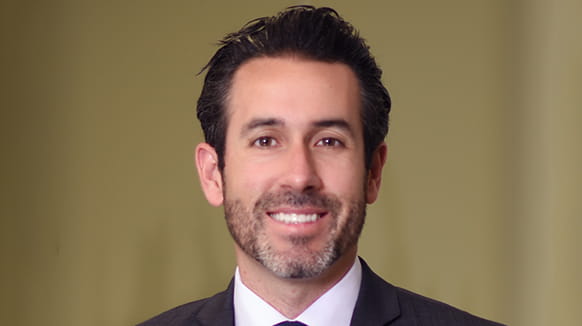On Thursday, July 15, 2021, the Supreme Court of California released its decision in Ferra v. Loews Hollywood Hotel, LLC, finding that “regular rate of compensation” under California Labor Code section 226.7(c) and “regular rate of pay” under section 510(a) are synonymous, both encompassing all non-discretionary payments, not just hourly wages.
Under California law, employers must provide employees with overtime pay when employees work more than eight hours a day or 40 hours per week. (Lab. Code, § 510, subd. (a).) To calculate overtime pay, section 510(a) requires an employer to compensate an employee by a multiple of the employee’s “regular rate of pay.”1 California law also provides for meal, rest and recovery periods, and if an employer does not provide a compliant meal, rest or recovery period, section 226.7, subdivision (c) requires the employer to pay “one additional hour of pay at the employee’s regular rate of compensation.” The question presented in Ferra v. Loews Hollywood Hotel, LLC was whether the Legislature intended “regular rate of compensation” under section 226.7(c) to have the same meaning as “regular rate of pay” under section 510(a). The Supreme Court found that, yes, it did.
Factual and Procedural Background
From June 16, 2012, to May 12, 2014, defendant Loews Hollywood Hotel, LLC (“Loews”), employed plaintiff Jessica Ferra (“Ferra”) as a bartender. Loews paid Ferra an hourly rate, and also provided quarterly non-discretionary incentive payments. During her employment, if Ferra was not provided with a compliant meal or rest period, Loews paid her an additional hour of pay according to her hourly rate, but Ferra’s quarterly incentive payments were not factored into the calculation of premium pay owed under section 226.7(c). Ferra filed a class action suit against Loews alleging that by omitting the non-discretionary incentive payments from its calculation of premium pay, Loews failed to pay for noncompliant meal or rest breaks as required by section 226.7(c).
The trial court granted summary adjudication for Loews on the ground that calculating premium pay according to an employee’s base hourly rate is proper under section 226.7(c). The trial court agreed with Loews that “regular rate of compensation” in section 226.7(c) is “not interchangeable” with the term “regular rate of pay” under section 510(a), which governs overtime pay. The Court of Appeal affirmed, holding that “regular rate of compensation” in section 226.7(c) and “regular rate of pay” in section 510(a) are “not synonymous, and the premium for missed meal and rest periods is the employee’s base hourly wage.” (Ferra v. Loews Hollywood Hotel, LLC (2019) 40 Cal.App.5th 1239, 1246 (Ferra).) The Supreme Court granted review, and reversed, applying its decision retroactively.
Analysis
In interpreting the statutes, the Supreme Court rejected the Court of Appeal’s reasoning that “where different words or phrases are used in the same connection in different parts of a statute, it is presumed the Legislature intended a different meaning.” Instead, the Supreme Court favored the principle that “where statutes use synonymous words or phrases interchangeably, those words or phrases should be understood to have the same meaning.” The Supreme Court found that the Legislature used the terms “pay” and “compensation” interchangeably in the text of sections 226.7(c) and 510(a), therefore the meaning of the terms should be the same. (See § 226.7(c) [“the employer shall pay the employee one additional hour of pay at the employee’s regular rate of compensation”]; § 510(a) [overtime “shall be compensated at the rate of [a multiple of] the regular rate of pay”]; ibid. [“Nothing in this section requires an employer to combine more than one rate of overtime compensation in order to calculate the amount to be paid to an employee for any hour of overtime work.”].)
The Supreme Court further agreed with Justice Edmon’s dissent in the Court of Appeal, which stated: “In 1999, ‘regular rate’ [in the FLSA] was widely understood to mean base hourly rate plus bonuses. Although the Legislature modified the federal language when it adopted section 510, the Legislature intended ‘regular rate of pay’ to have the same meaning as ‘regular rate.’ But although the Legislature modified the federal language in a similar (although not identical) manner when it adopted section 226.7, [Loews contends] it intended an entirely different meaning — and although it nowhere articulated that intended meaning, it expected parties and the courts to infer the meaning by its use of the word ‘compensation,’ rather than ‘pay.’ I am not persuaded.” (Ferra, supra, 40 Cal.App.5th at p. 1265 (conc. & dis. opn. of Edmon, P. J.).
The Supreme Court cemented its decision in policy considerations, quoting Troester v. Starbucks Corp. (2018) 5 Cal.5th 829, 839, “When construing the Labor Code and wage orders, we adopt the construction that best gives effect to the purpose of the Legislature and the IWC. . . . Time and again, we have characterized that purpose as the protection of employees — particularly given the extent of legislative concern about working conditions, wages, and hours when the Legislature enacted key portions of the Labor Code. . . . In furtherance of that purpose, we liberally construe the Labor Code and wage orders to favor the protection of employees.” (internal citations omitted.) Accordingly, to the employee’s benefit, employers must now pay meal, rest and recovery period premiums at the employee’s regular rate of pay.
Finally, the Supreme Court found that this decision will apply retroactively, reasoning that “no considerations of fairness or public policy” warrant only applying this decision prospectively. As such, California employers who have been paying meal, rest and recovery periods using the employee’s standard or base hourly rate of pay for meal and rest period premiums (and not the higher regular rate of pay rate) have not complied with the rule articulated in the Ferra decision and are vulnerable to claims that the premiums paid were insufficient and did not cure the underlying meal, rest or recovery period violation. The Supreme Court found that because the question presented was not one on which it had previously issued a definitive decision, the law could not and should not have been viewed as firmly fixed. Therefore, employers could not claim reasonable reliance on settled law. Further, the Supreme Court openly considered California employers’ substantial exposure in applying this retroactively and saw no issue, stating, “it is not clear why we should favor the interest of employers in avoiding ‘millions’ in liability over the interest of employees in obtaining the ‘millions’ owed to them under the law.”
Takeaways
Employers should immediately review and update all payroll policies and procedures pertaining to meal, rest and recovery period premiums and consider auditing previously paid premiums, to ensure that any previous premiums were paid at the regular rate of pay. As this decision clarified, employers must pay meal, rest and recovery period premiums using the employee’s overtime regular rate of pay, not the employee’s standard hourly rate of pay. California employers should consult with legal counsel when considering how to address the implications of the retroactive aspect of this Supreme Court decision.
Additionally, to the extent any California employers have been contemplating implementing an arbitration agreement with a class waiver, this decision may tip the scale in favor of doing so, as this decision will certainly incentivize class-wide litigation in California.
1 Note that California requires a calculation of regular rate of pay that differs from the FLSA calculation when paying employees flat-sum bonuses. Alvarado v. Dart Container Corp. of California, (2018) 4 Cal. 5th 542



